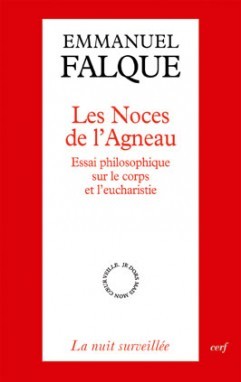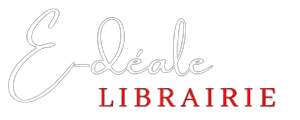Ce livre part d'une question, qui apparaît bien encore aujourd'hui comme une aberration : " Comment cet homme peut-il nous donner sa chair à manger ? " (Jn 6, 52.) Ce qui fait ici la plus grande étrangeté du sacrifice eucharistique n'aura pas la force de nous y accoutumer. Reste que la philosophie peut l'interroger (puissance du corps, part d'animalité en l'homme, éros à partager), et la théologie le dévoiler (transsubstantiation, Agneau immolé, figures de l'" agapê "). Les " noces de l'agneau " (Ap 19, 19) célèbrent ainsi un " festin " auquel nul ne sait plus comment se fier, dès lors que l'invocation du mystère a parfois l'effet pervers de nous dispenser de nous interroger. Appuyé sur les grandes questions de la tradition (transsubstantiation, incorporation, adoration, etc.). mais aussi éclairé par les analyses de toute l'histoire de la philosophie (d'Aristote et saint Thomas à Spinoza, Deleuze ou Merleau-Ponty), cet ouvrage tente d'éclairer " existentiellement " et " dogmatiquement " le " ceci est mon corps ", gageant que la corporéité du Christ est venue tout assumer, et que rien de notre chaos intérieur ne saurait lui demeurer étranger. Faisant suite au " Passeur de Gethsémani " et à " Métamorphose de la finitude ", mais dans un triptyque pouvant être lu de façon séparée, " Les Noces de l'Agneau " passent donc des expériences de la " mort " et de la " naissance " à celle du " corps ". " Hoc est corpus meum " (" ceci est mon corps "). L'énoncé n'est pas de confession seulement (liturgie eucharistique), mais aussi d'humaine nature (échange des époux) et affaire de culture (paradigme de l'Occident). À la " Descente dans l'abîme " (Ire partie) et au " Séjour de l'homme " (IIe partie) répond ici la figure du " Dieu incorporé " (IIIe partie), de sorte que " rien n'engage un homme comme l'eucharistie " (Fr. Mauriac). -- This book begins with a question posed long ago that has lost nothing of its incongruity today: 'How can this man give us his flesh to eat?'(Jn 6, 52.) Only philosophy can explore it (power of the body, the animal part of man, the sharing of Eros); and only theology can remove its mystery (transubstantiation, the sacrifice of the Lamb, figures of 'agape'). The 'wedding of the lamb' (Rev 19, 19) is a celebratory feast which we don't quite know how to interpret, all the more so because the evocation of 'mystery' has the perverse effect of dissuading us from attempting to understand at all. Based on the great traditional questions (transubstantiation, incorporation, adoration, etc.) and elucidated by analyses drawn from the entire history of philosophy (from Aristotle and Saint Thomas to Spinoza, Deleuze and Merleau-Ponty), this book explores the statement 'This is my body' both 'existentially' and 'dogmatically', presuming that the vocation of Christ's corporeality was to bear everything, and that nothing of our inner chaos could be unknown to him. Following on from the 'Passeur de Gethsémani' and 'Métamorphose de la finitude', 'Les Noces de l'Agneau' completes a triptych which can also be read as three separate books. It moves on from experiences of 'death' and 'birth' to that of the 'body'. 'Hoc est corpus meum' ('This is my body'). The statement is not only of a confessional nature (Eucharistic liturgy), but also human (exchange between spouses) and cultural (paradigm of the West). To the 'Descente dans l'abîme' (Part 1), and the 'Séjour de l'homme' (Part 2); the figure of 'Dieu incorporé' responds in Part 3, demonstrating that 'There is nothing that commits a man like the Eucharist'. (Br. Mauriac).




